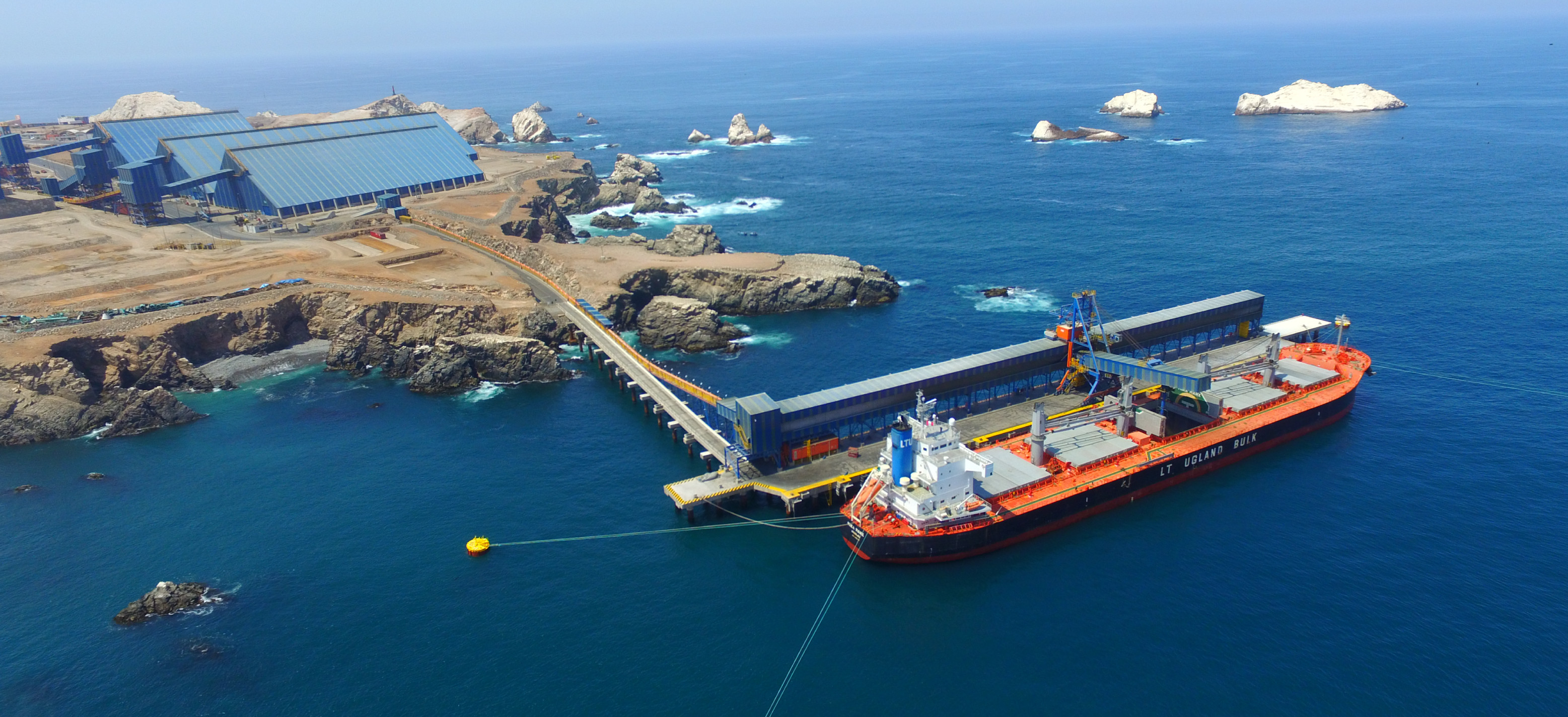Lima, DECEMBER 7 2022The Zafranal and Haquira Mining Projects Look at TISUR as the Future Port of Departure for Their Copper Production

In an interview granted to the Peruvian Institute of Mining Engineers (IIMP), Álvaro Galindo, Corporate CEO of the Tramarsa Group, which manages the Matarani port concession through the Terminal Internacional del Sur (International Terminal of the South - TISUR), told us about the importance of this port for mining projects and foreign trade operations in the south of Peru.
What is the situation of ports in the country? How much progress have we made in the last decades?
Since 2000, Peru has made remarkable progress in the modernization of nearly all of its public ports through good concession agreements signed with world-leading private operators.
From the point of view of mining, in Peru there are ports with infrastructure and equipment that meet the international standards and allow us to ship large shipments of minerals to the world markets. Ports have then become very important links in this sector’s export logistics chain.
Which aspects of the port of Matarani’s evolution, since the port was awarded to TISUR, would you highlight in relation to the mining sector?
Today, and after 23 years of concession, the port of Matarani has very high operational standards, with first generation facilities and equipment to receive, store, and ship copper concentrate produced by large-scale mining in Arequipa, Cusco, and Ica.
The most important copper mines in the region use the port of Matarani for their exports. It has become a mining cluster through which over 4.5 million tons of copper concentrate are shipped annually.
Which are the terminal’s facilities and how many docks does it have?
The port of Matarani or Terminal Internacional del Sur (TISUR) has four multipurpose docks for all types of cargo from and to the area of influence in Arequipa, Cusco, Moquegua, Ica, and also Bolivia.
It handles approximately seven million tons in 400 vessels annually. In addition to its four docks, it has large storage areas, mechanized systems for loading and unloading bulk cargo in general, specialized equipment for handling containers and storage tanks for chemicals and alcohols, among others.
How much have you invested in modernizing the port in these 23 years of operation?
TISUR has invested about 400 million dollars and is developing several projects it needs to implement in order to accompany the growth of the region’s mining, agriculture, commerce, and industry sectors.
Which are the main products that are transported through this terminal?
The predominant cargo is copper concentrate, but we can also find corn and wheat, fertilizers, heavy machinery, refrigerated containers, retail cargo, among others.
How would you describe dock F’s performance since it began operating? What plans do Las Bambas, Antapaccay, and Cerro Verde have for this dock for the coming years?
Dock F’s performance excels in terms of shipping reliability and speed. It can ship 30,000 tons in less than 20 hours. It has the capacity to handle, in excess, the production of Cerro Verde, Las Bambas, and Antapaccay. In other words, additional mines could be added to the shipping system. On the other hand, it has sufficient depth to accommodate large vessels of up to 60,000 tons.
Regarding the plans of the three aforementioned mines, their contracts give them stability to continue shipping their entire production in the future.
How many mining companies transport their concentrates using this port?
Currently, six mining companies transport their cargo via TISUR (Cerro Verde, Hudbay, Antapaccay, Las Bambas, Ares, and Mina Justa). We are working to continue supporting the development of new mining projects and thus become a key link in their export logistics chain.
What about Zafranal and Haquira?
These are precisely two mining projects that are looking at TISUR as the future port of departure for their production.
How do the blockades of the Southern Mining Corridor affect TISUR’s activities?
The problem of the blockades of the Mining Corridor seriously affects the sustainability of the mines located in that area of influence. In the case of TISUR, we have taken measures to have sufficient reception and storage capacity to support the mining companies in this difficult situation.
You have recently won a gender equality award. How important is diversity and inclusion regarding gender to TISUR?
In the last year, TISUR has received important recognitions from national and international institutions in the port sector. We take great pride in our effort to be a company where gender equality has been a genuine priority since the beginning of the concession. On the other hand, the Latin American Association of Port Authorities has awarded TISUR the prize for Technological Innovation in a congress held recently in Santos, Brazil.
How do you expect to close this year and what investment plans or projections do you have for 2023-2024?
2022 has been a good year for TISUR, having exceeded the budgeted goals, despite the difficult situation affecting the mining sector and the country in general. We are focused on actively contributing to the growth of the southern region of Peru. We have been working on an important expansion plan for our port infrastructure to efficiently handle the new cargo brought in by the large projects underway, such as Majes Siguas 2, which will significantly extend the agricultural frontier and, hence, the growth of agribusiness, as has been the case in the north of the country with the Chavimochic project, where there is an unprecedented boom.







